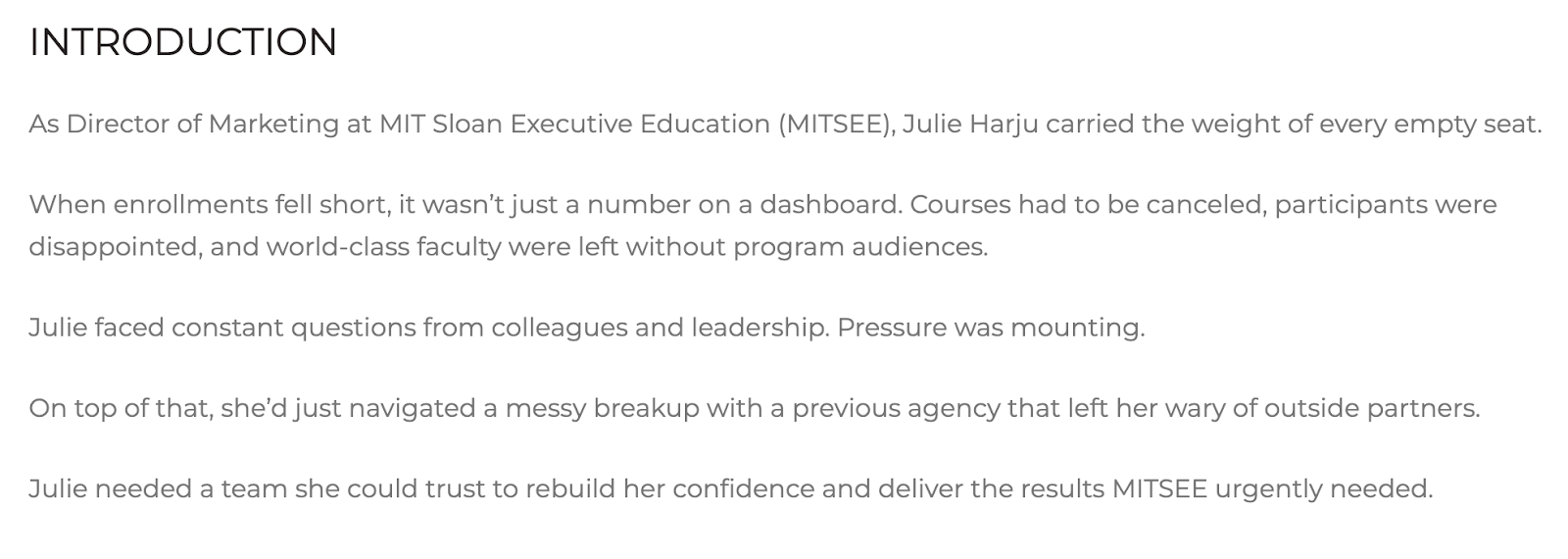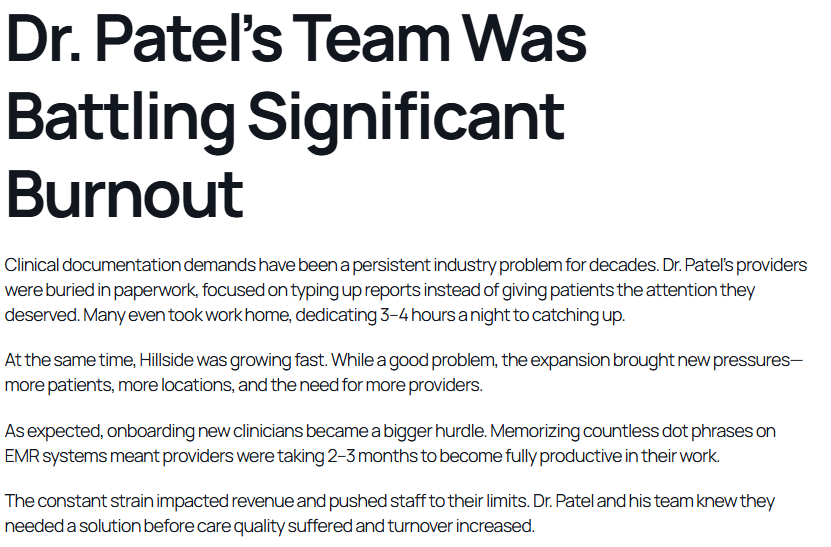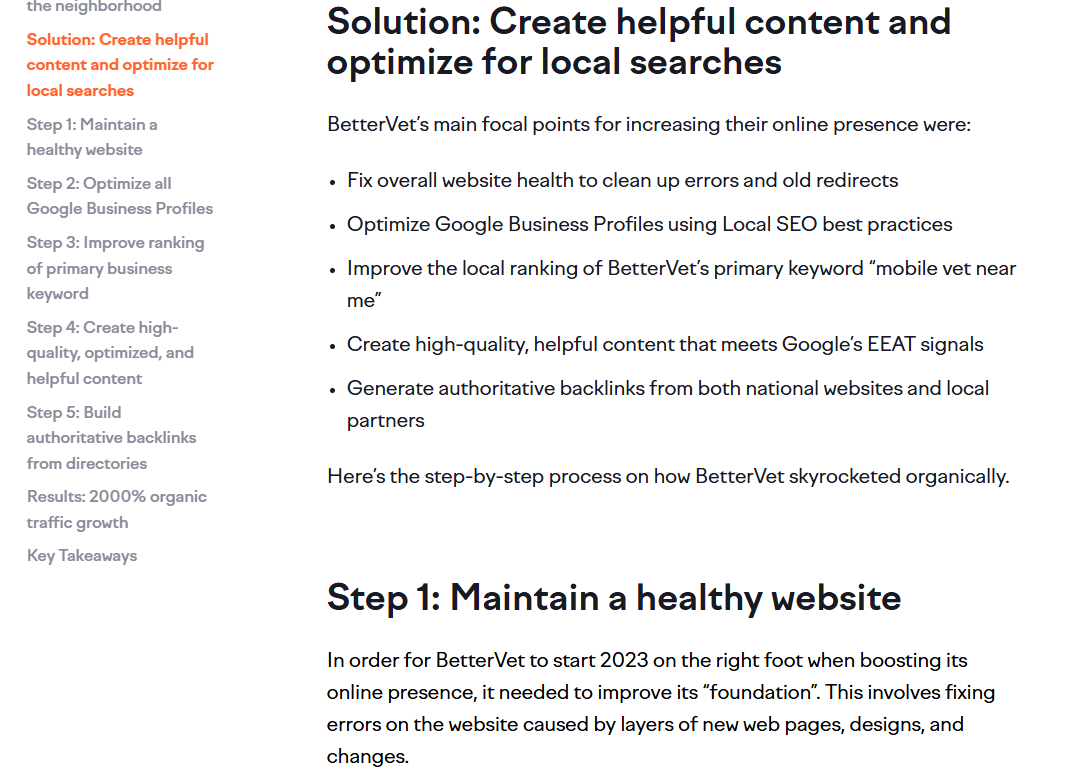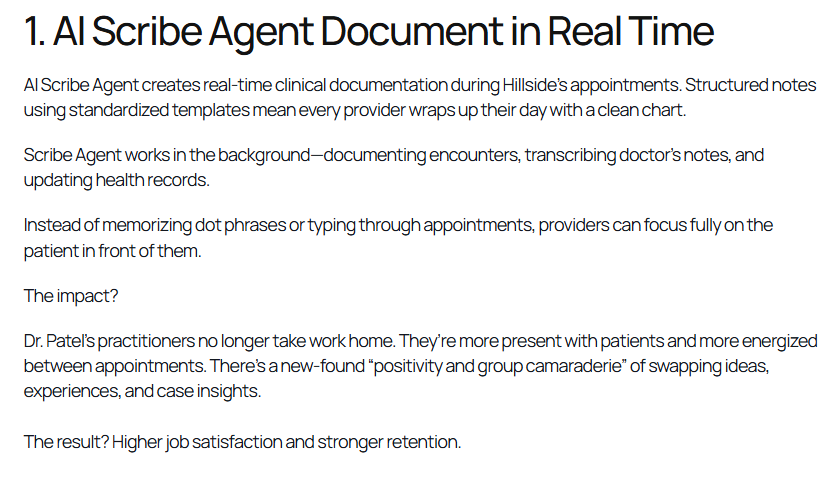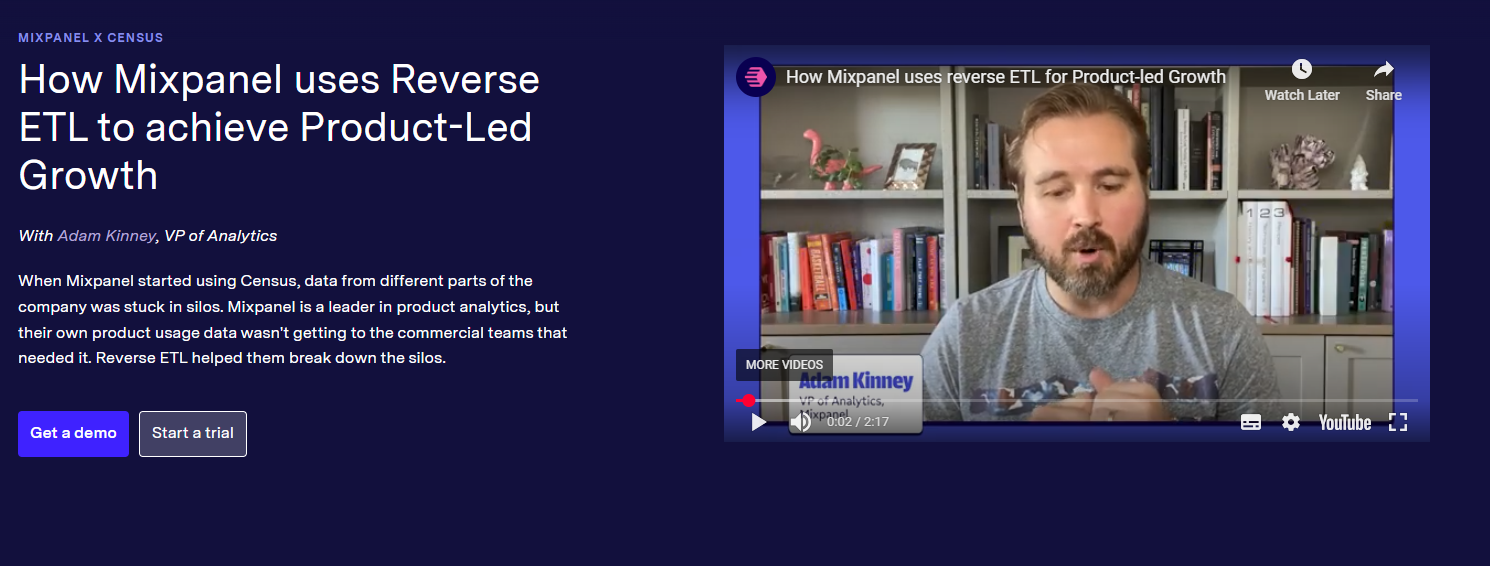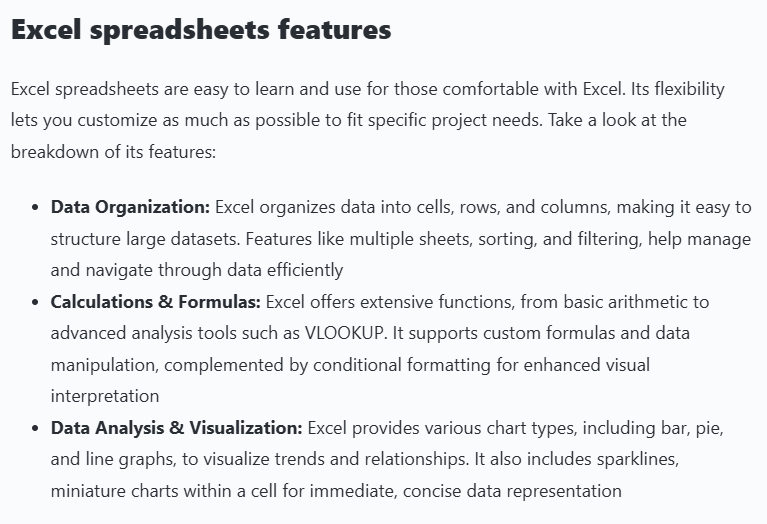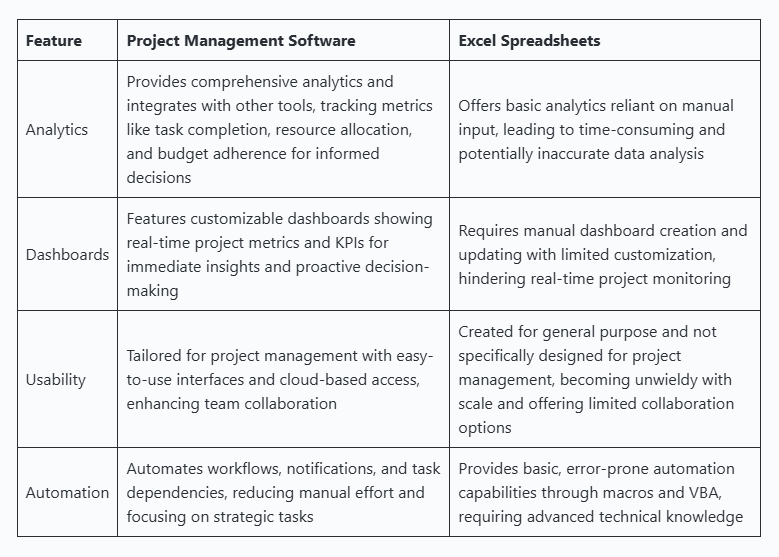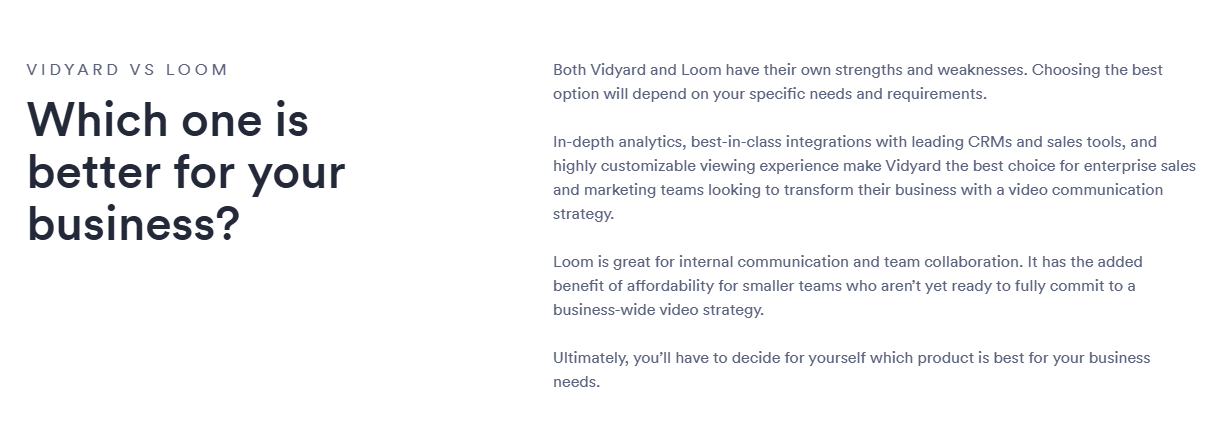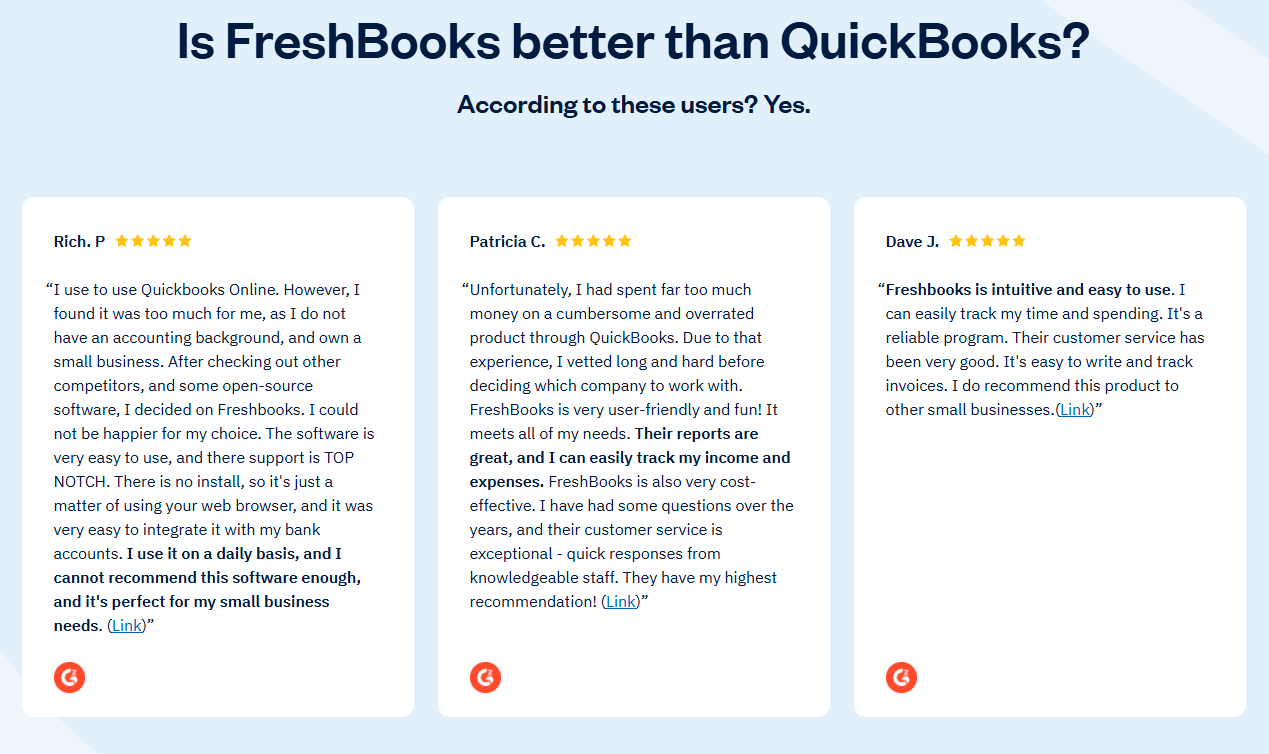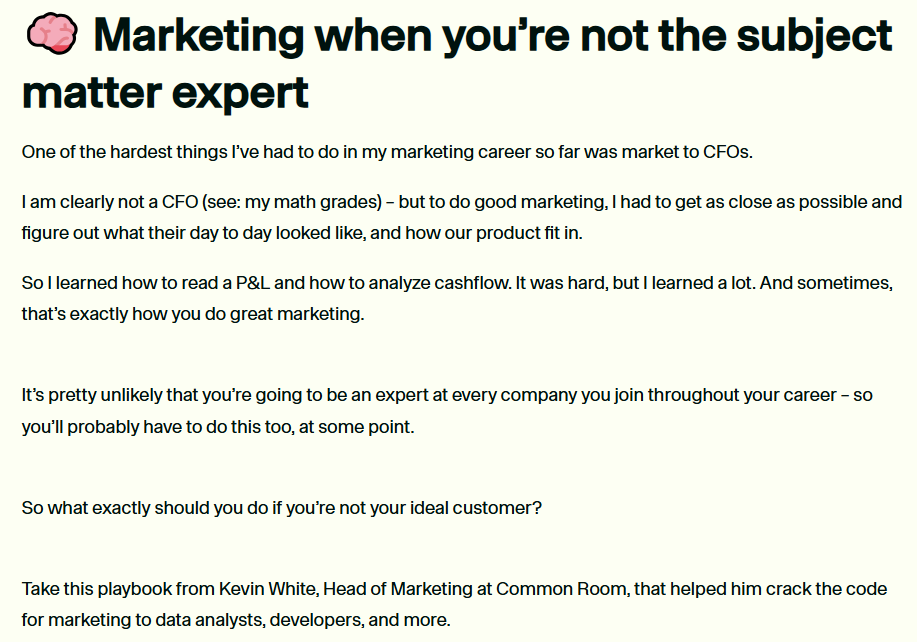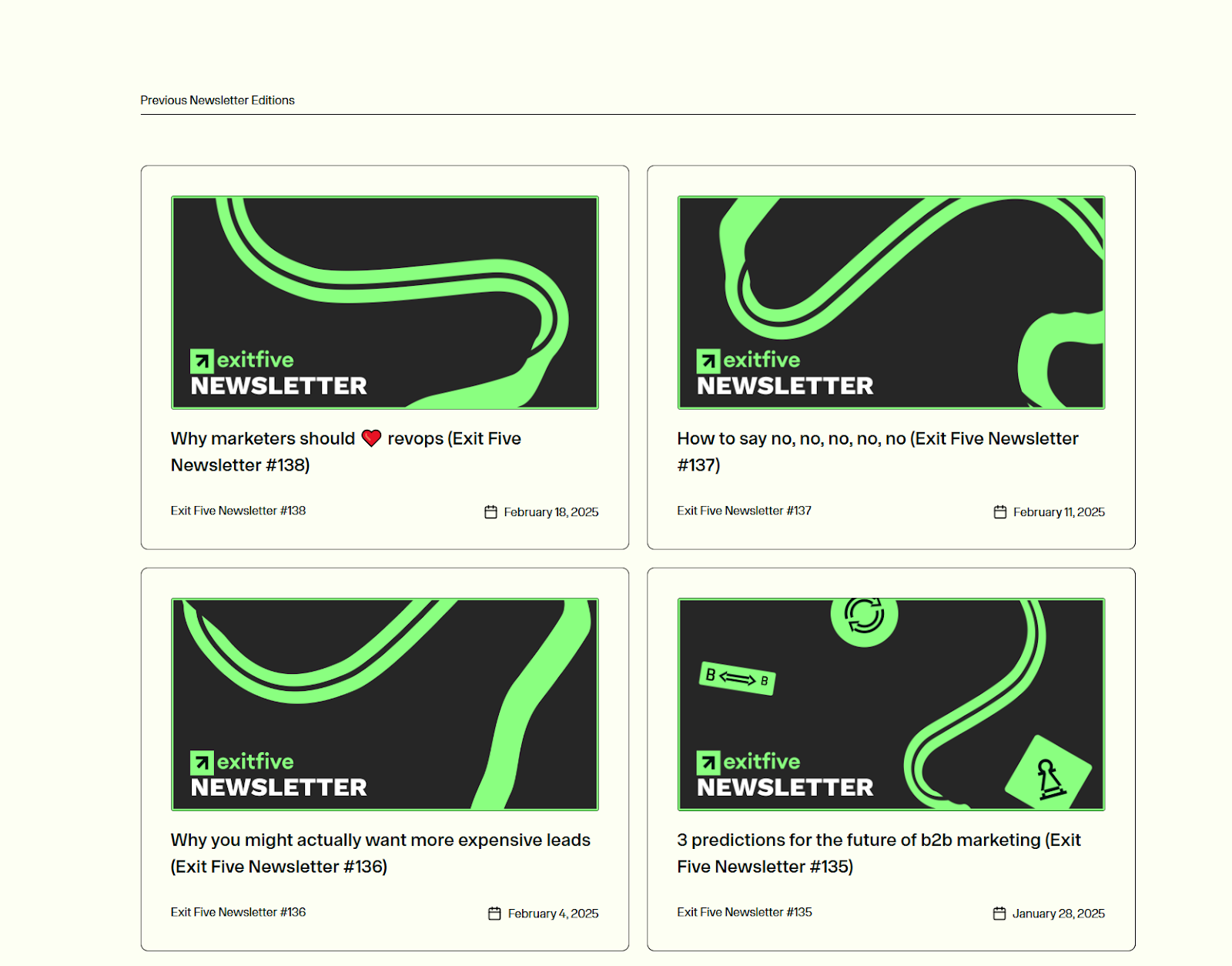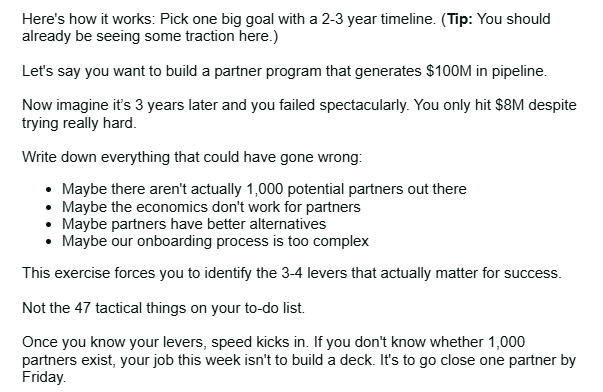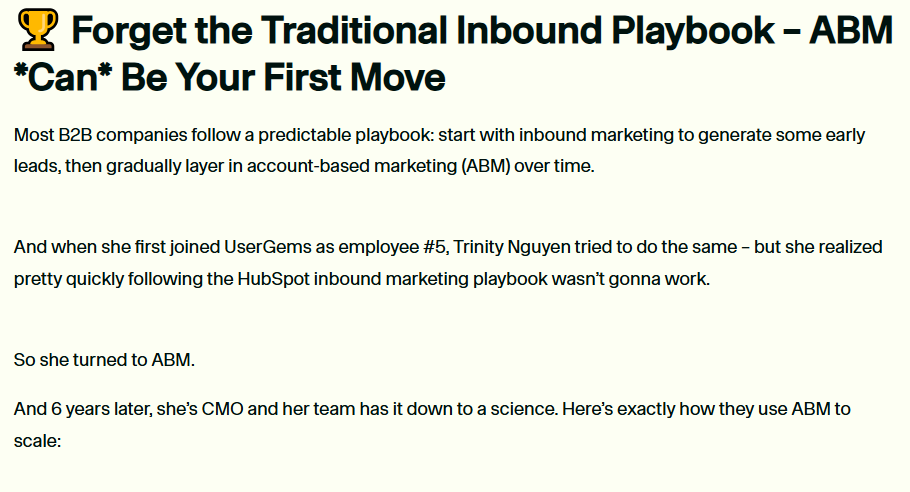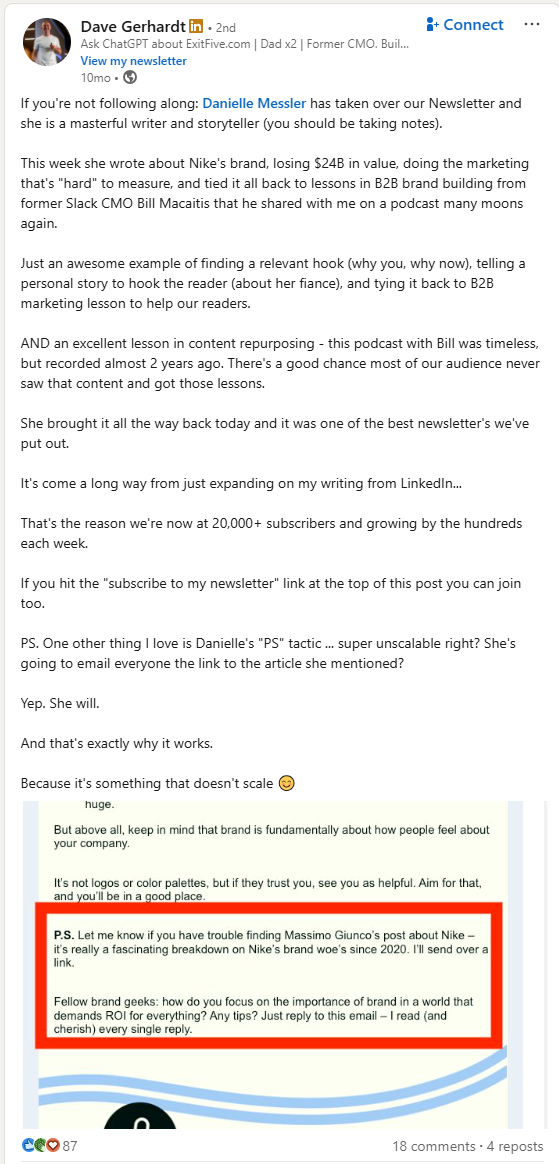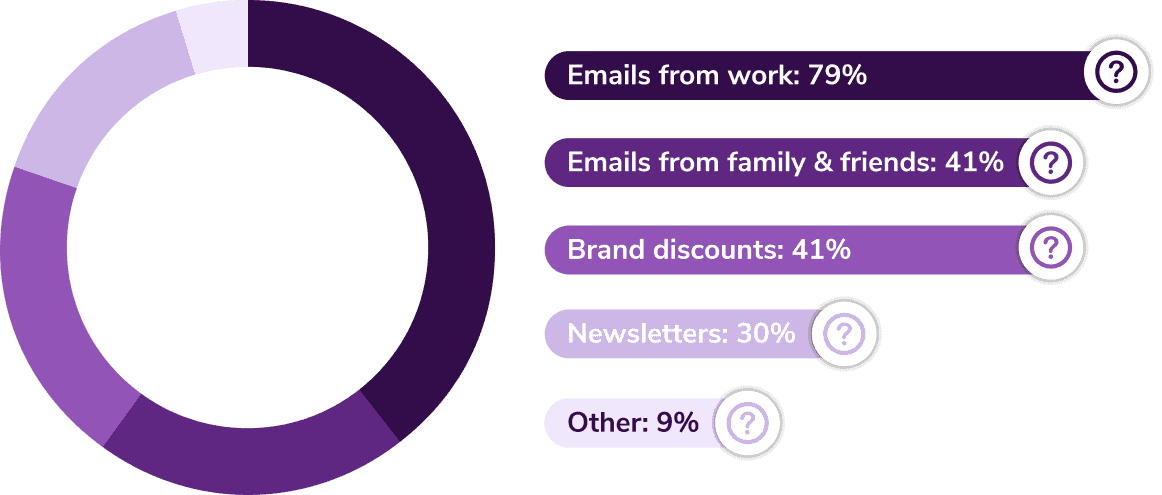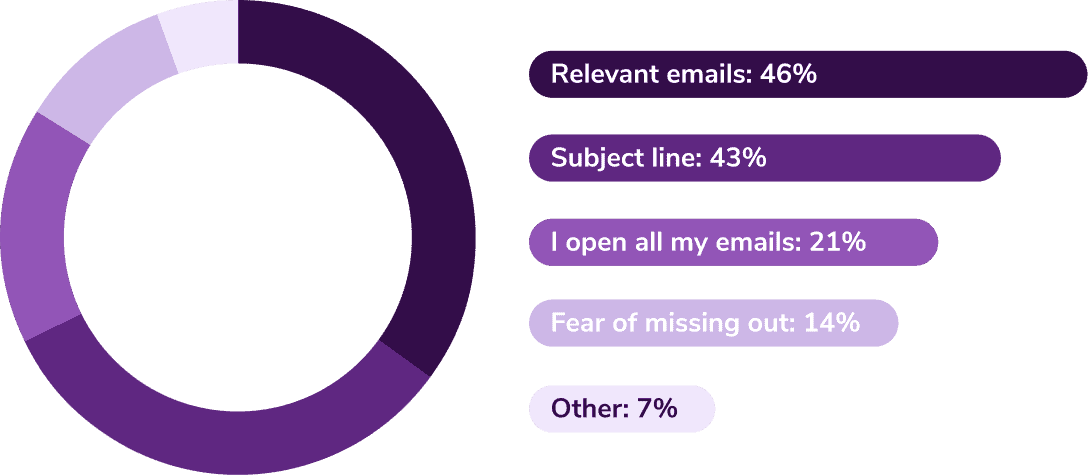B2B marketers must make their account-based content programs relevant. The best way to do this is to become disciplined with customer conversations..
Here, we’ll share an account-based content playbook that accelerates enterprise sales pipeline. You’ll learn how to attract the c-suite, sell to entire buying committees, and cross-sell into new markets through customer expansion.
Converting customer success into content
“Where do you go for new information?” is a common question we ask in our customer interviews.
After countless conversations with senior decision-makers in dozens of industries, we’ve found that most leaders look to their network.
Specifically, they rely on:
- Their direct reports: Both individual contributors (ICs) and middle-management
- Their peers: Commonly those with the same job role in other organizations
This is why customer success content works so well.
It elevates peer experiences and places them in front of your ICP. Goodwill is created within target accounts while proving you can get results.
The approach is even more effective when applied to customer expansion. Not only have you proven your success within an organization, but you’ve already overcome the red tape to become an approved vendor.
But doing this right means making your customer the hero of the story. Here’s how:
Write about shared pain points
Pain points are rarely unique to the individual, no matter what many may think. However, this belief is often a good indicator of problems that buyers are desperate to overcome.
By conducting customer interviews, you can identify these pain points and start to uncover patterns.
Prepare for interviews with account stakeholders and c-suite execs by limiting yourself to a set of broad questions. This allows you to follow “conversational threads,” using follow-up questions to dig deeper into their responses.
For example, the question "what are your revenue goals for the next six months?" may be met with the following response:
“We're looking to develop new revenue streams to improve customer value and improve the product experience to reduce churn.”
This response gives us two conversational threads to follow: “new revenue streams” and “product experience optimization.” But we don’t yet have context as to why and how they’re doing these things.
We can elicit this context using questions like:
- What do these new revenue streams look like?
- Why is improving the product experience important?
- What are the biggest hurdles you face when improving the product?
The answer to these questions may seem obvious, but they allow you to uncover the language customers use and identify new conversational threads to go deeper. It helps you reveal more context, the motivations behind their goals, and the root cause behind the pain point.
Let’s say you’re targeting VP-level marketers working at enterprise software companies. A common problem associated with improving the product experience might be:
“We want to ensure customers are getting as much value from our product as soon as possible. ‘Time to value’ is an important metric to us because we want to drive adoption across all teams within customer accounts.”
We now know the following:
- “Time to value” is an important metric
- This means customers get as much value as quickly as possible from the product
- Why is it important? Because it’s correlated with greater account value as more users adopt the product
Individual contributors have their finger on the pulse of these challenges. Make time to speak with both senior decision-makers and ICs to understand how a problem impacts the entire organization.
Cater to the buying committee
The sales cycle is more than a series of calls and consultations. It may start that way during discovery—where one or two stakeholders lead the conversation—but behind the scenes you have their bosses, CFOs, and procurement teams to convince.
Trouble is, you don’t have direct access to these people, and therefore cannot directly influence their decisions.
Account-based content helps overcome this bureaucratic maze. It acknowledges that the needs of stakeholders beyondt your immediate buyer must be catered to.
What content should you create for buying committees? Start with the following ideation process:
- Customer interviews: Again, ask questions about what the buying and procurement process looks like for your customers.
- Sales teams: Work with sales leaders to collect insights. Arm your reps with the right questions and communicate how it fuels material that will help them close more deals.
- CRM data: Segment your best accounts and review contact history. Which contacts were involved early on in the sales process? Are there any insights that can be gleaned from sales activity and notes left by reps?
Turn these insights into decks, short-form articles, slides, and even video content. Tools like Loxo allow you to create microsites for each account, organizing content in a personalized manner that makes it easy for your prospect champions to get internal buy-in.
Empower individual contributors to influence upwards
Alongside peer recommendations, senior decision-makers look to their direct reports for insights from “the field.” These include new ways of working, vendors, and content that aligns with internal conversations.
Top-of-funnel content still has a place at the table. ICs and middle-managers help senior decision-makers filter through the noise and have bottom-up influence in an organization.
Here’s how to write for ICs:
- Position content around daily tasks and priorities: While ICs rarely have buying power, they are your end user. Providing actionable content around specific use cases will arm them with a solution to present to their managers.
- Integrate organization-wide challenges: Some problems run so deep they frustrate entire teams. Write about these to create internal buzz.
- Focus on the big problem early on: Don’t keep strategic pain points hidden halfway through an article. Use article and section introductions to make it clear your audience is in the right place.
When writing for ICs, make them think “I need this, and so does my boss.” Teaching them how to solve a JTBD can act as a trojan horse.
For example, message testing platform Wynter’s ICP is VP-level demand generation and product marketing leaders, but this article on message testing caters to a beginner audience:
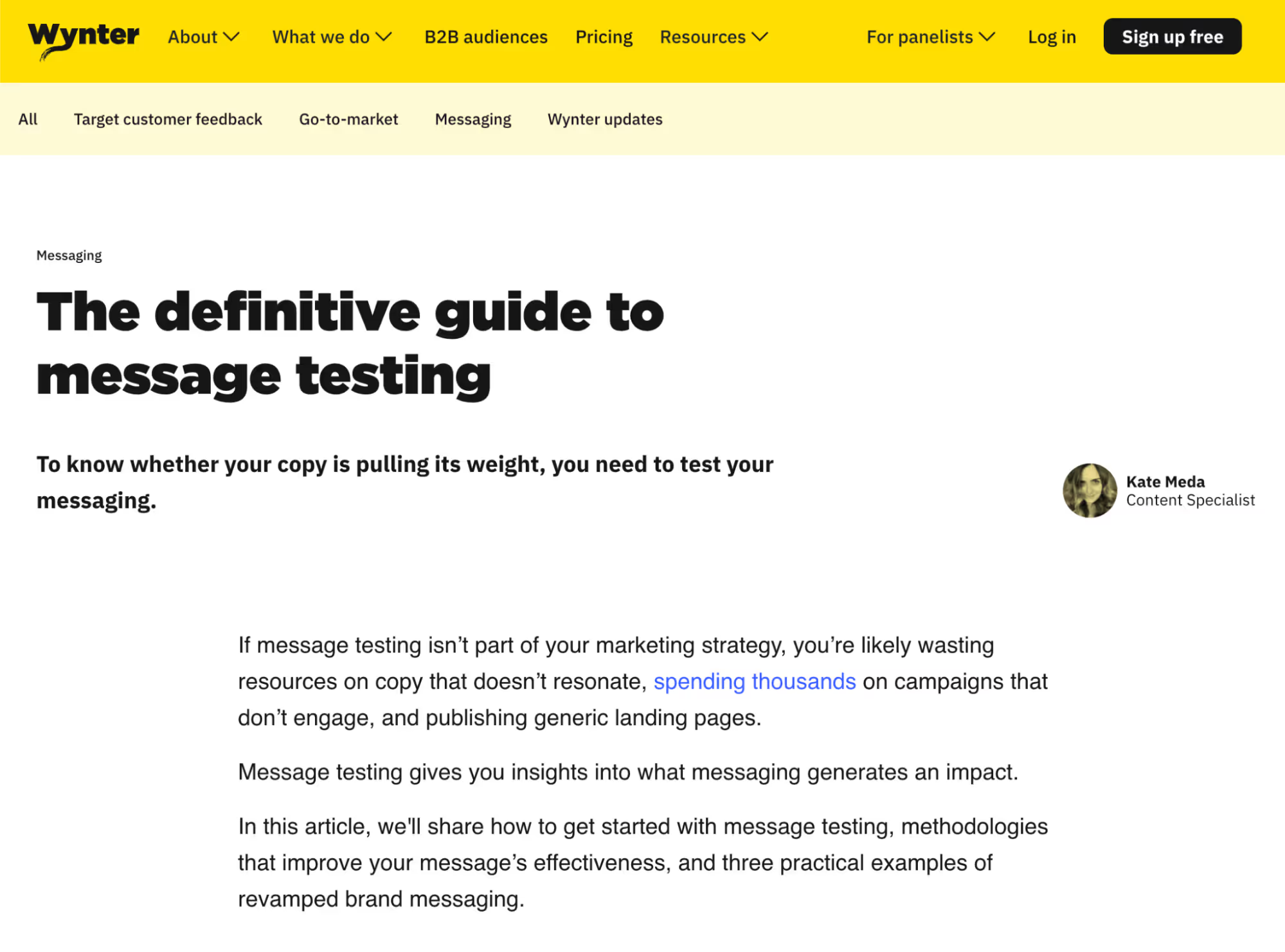
It ranks for the primary target keyword because it caters to a beginner audience. ICs are looking for information on the topic because they want to learn what it is, how to do it, and examples of it in action. The same goes for VP-level audiences who have yet to discover what message testing is.
Creating content for both buying committees and ICs alike gives you a diversified content portfolio. In the account-based marketing world, it pays to cater to all seniorities.
Create episodic content
Episodic content applies various topic ideas and formats around a central theme.
In a recent episode of the Demandist podcast, Nitsan Peled, Director of Content at Optimove, shares how he takes an episodic approach to account-based content:
“We took from Netflix’s book. So if [for example] we want to talk about segmentation, we come up with a series with a title or topic. And then we break it down into chapters. And we find someone to write those chapters.
“We come up with seven episodes. [Each] episode would be dedicated to a specific brand.”
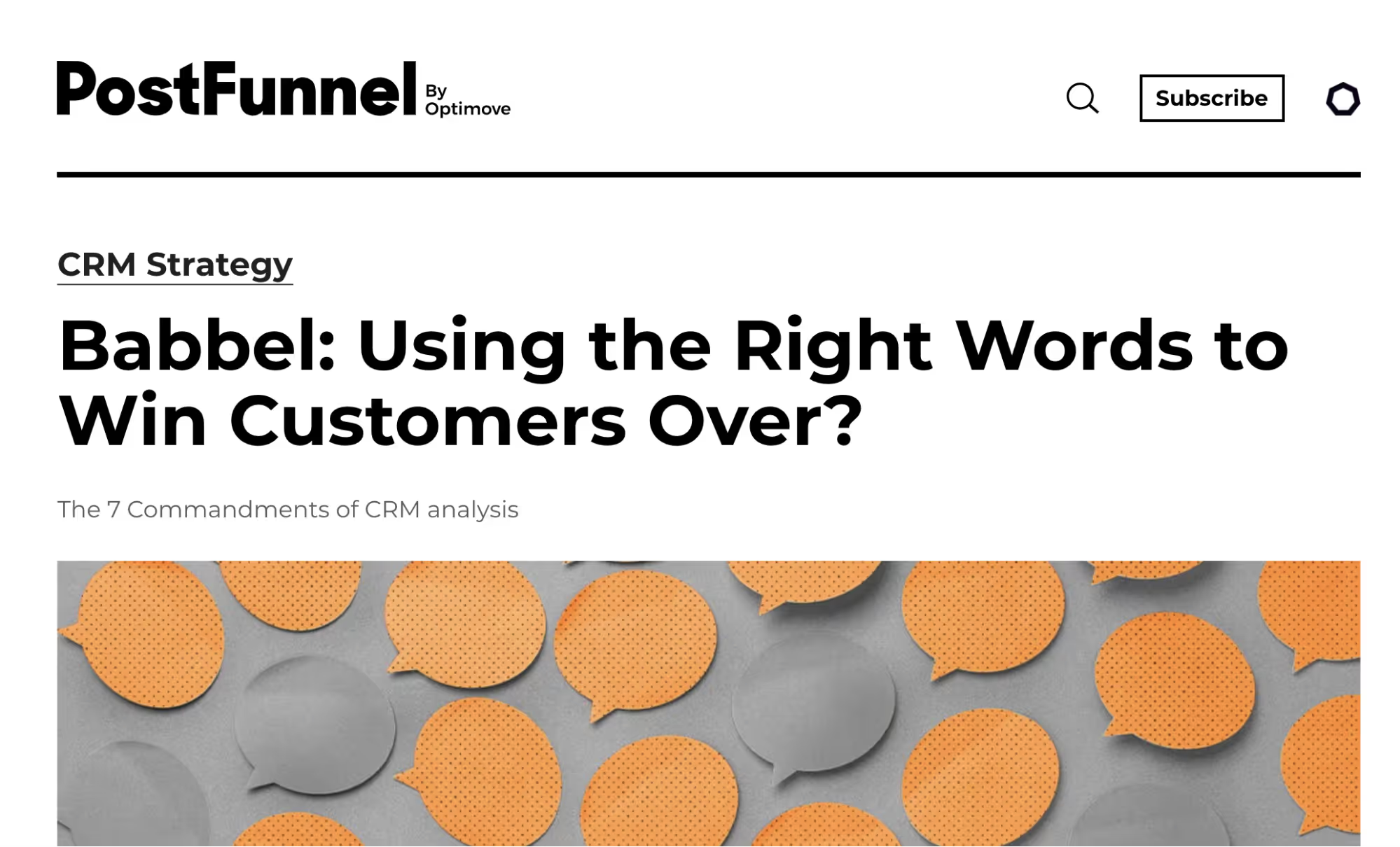
This approach allows you to:
- Demonstrate you understand the world your customer operates (think subject matter expertise and industry challenges)
- Share the success you’ve already delivered to customers and other departments within existing accounts (for your customer expansion efforts)
- Provide actionable insights and guidance for ICs across an organization
Dedicating a content series to a single industry, job role, or JTBD can seem like a mammoth task. However, the concentrated attention it yields can have a compounding effect on pipeline and awareness—especially when attracting a narrow audience.
Account-based content distribution
Getting your content seen by target accounts requires a personalized approach to distribution.
To capture your ICP’s attention, you must go beyond traditional promotion tactics like content repurposing and email newsletters.
1. Empower your existing customers
Your customers are your biggest advocates. Getting them involved in the entire content production process not only highlights success, but primes them to share it.
They’ll also give you insights into how other areas of the business operate, which is crucial for customer expansion.
Once you’ve injected customer stories into your content (as well as any direct quotes from users), give them the tools they need to amplify it. Provide them with guidance and ease objections with a plan that they’re comfortable with.
Here’s how your customers can help with distribution activity:
- Repurpose for social: Make the sharing process easier for them by writing LinkedIn posts on their behalf. Get them on a call, ask them a question about the topic, and then repurpose the recording into short-form video content.
- Reach out to internal influencers: Identify contacts within existing accounts. Gauge whether it’s appropriate to reach out and share that content directly.
- Share on internal channels: There may be an employee forum or community where cross-department conversations take place. Uncover this during the early stages of the process, and only suggest it if your customer feels it’s appropriate.
For customer expansion efforts, you must also uncover:
- The cultural barriers you must overcome
- How buying committees work in different geos
- Whether or not they share the same pain points
The world is getting smaller from a communications perspective, and many of these factors may no longer apply (especially when marketing to millennials). However, do your due diligence to ensure your messaging is appropriate.
2. Create an employee advocacy system
Speak to your salespeople and identify target account contacts they’re engaged with. Involve reps during the earlier stages of the production process. Encourage them to participate during the topic ideation stage.
Uncover the objections they experienced when closing customer accounts. Use this to fuel social content that acts as an idea barometer. The more engagement a post gets, the more likely it is that a long-form article will perform well.
Coordinate with reps and keep them up to date with your publishing schedules. Encourage them to share your content directly with their prospects and amplify it on channels like LinkedIn.
3. Repurpose for social
Double-down on your employee advocacy and customer success efforts by creating a series of social posts for your company page.
Yes, we all know personal profiles (anecdotally) generate more engagement than company pages. But this is only true because brands don’t push the envelope and give their brand a personality worth following.
Just look at Lavender as an example, which has amassed over 26,000 followers in a matter of months due to their fun and educational content:
To extend your reach and get the attention of other account employees, tag them in your post. But only do this if they’re involved in the content itself.
Repurpose your how-to articles into a series of posts that dive into specific elements. Highlight relevant pain points and dig deep into specific challenges. Don’t forget to cater to both senior decision-makers and ICs.
4. Guest case studies
Repurposing your success stories into guest posts can quickly get your message in front of a wider audience.
It’s also a great incentive for getting customers involved. Speak to several contacts to learn which publications they read and which are most popular.
Secure placements by reaching out to editors and pitching topics that sit in the sweet spot of these three areas:
- What the publication is hungry for: Look at recently published articles. Reverse engineer the highest performers (think social shares) to find top performing formats.
- Conversations happening in the market: Tie your customer success stories to pain points experienced by the rest of the market.
- The problem your product solves: Focus on a relevant pain point that a specific product feature solves.
Checking all three boxes ensures your guest post will get accepted. Have your cake and eat it too by writing about themes close to your product and ICP challenges.
Land and expand
Individual contributors, junior executives, and director-level leaders are all working towards the same goal.
Your content should serve everyone involved in achieving it. Make your account-based content work harder for you by writing for everyone with skin in the game.
You can’t always do this with a single piece of content without diluting your message. However, with a well-coordinated plan of attack, you can work all ends of the chain and get the entire department’s attention.
Establish authority and expand your customer accounts by getting the whole team talking about you.



